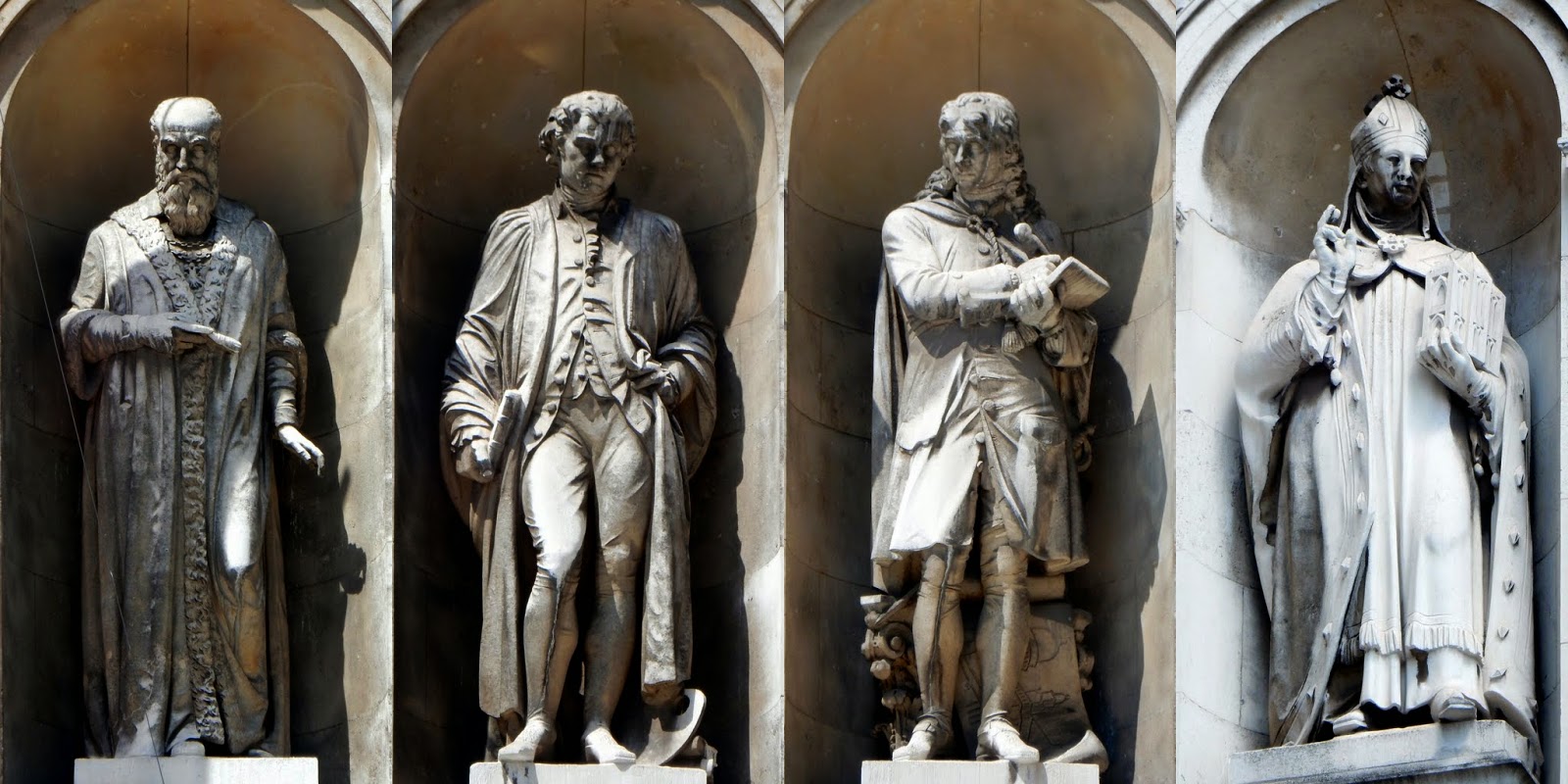Burlington House is a bit of a pudding, really, as you might expect from a government project. The Georgian palace of the amateur architect Lord Burlington was bought in 1854 to house various academic institutions that were cluttering up Somerset House and Marlborough House, which were needed for bureaucrats.
There was a scheme for intensive redevelopment including shops but public protests put a stop to that. Instead Sidney Smirke was employed in 1872 to convert it for the Royal Academy, adding another storey to the original facade by Colen Campbell. Its most prominent feature is a row of niches containing statues of artistic heroes by some of the best Victorian sculptors.
From left to right, they are
Phidias, by Joseph Durham ARA. The greatest sculptor of classical times, creator of the statue of Zeus at Olympia and the chryselephantine image of Athena in the Parthenon, is depicted bald as Greek writers always maintained, holding a panel carved with a hero taming a stallion.
Leonardo da Vinci, by Edward Stephens ARA. The famously bearded artist holds a brush and palette.
John Flaxman RA by Henry Weekes RA. Flaxman's funerary monuments abound in churches from St Pauls (Nelson) to humble parish churches everywhere. His most notable achievement, however, was to direct British sculpture towards the Classical Greek model under the influence of the Elgin marbles.
Raphael, by Henry Weekes. Another brush'n'palette pose.
In the middle is Michelangelo, by William Calder Marshal, currently hidden behind an ad for the Summer Show. Continuing left to right:
Titian by William Calder Marshall RA, a Scottish sculptor also famous for gooily sentimental works such as First Whisper of Love.
Sir Joshua Reynolds and Sir Christopher Wren, both by Edward Stephens.
William of Wykeham, not an artist but a bishop who administered building works for 14th century monarchs. By Joseph Durham.
The forecourt is all about Reynolds, appropriately as its founder, first president and despot for more than twenty years. The 1929 statue is by Alfred Drury, who had a strong line in historical portrait sculpture including Richard Hooker (Exeter) and Elizabeth Fry in the Old Bailey. Pevsner calls it 'bijou' but I think it captures the slight figure but energetic and intellectual nature of the man.
Even the trendy waterspouts in the paving installed in 1999 are arranged according to Reynolds' horoscope.




No comments:
Post a Comment